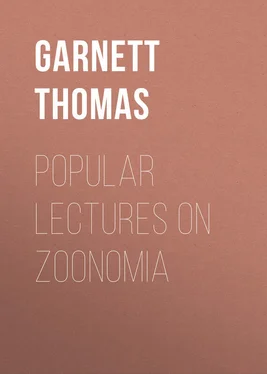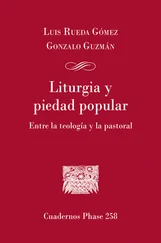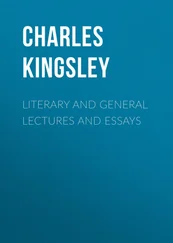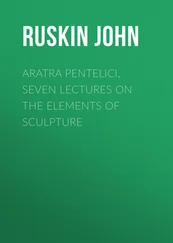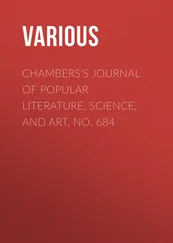Thomas Garnett - Popular Lectures on Zoonomia
Здесь есть возможность читать онлайн «Thomas Garnett - Popular Lectures on Zoonomia» — ознакомительный отрывок электронной книги совершенно бесплатно, а после прочтения отрывка купить полную версию. В некоторых случаях можно слушать аудио, скачать через торрент в формате fb2 и присутствует краткое содержание. Жанр: Биология, foreign_antique, foreign_prose, на английском языке. Описание произведения, (предисловие) а так же отзывы посетителей доступны на портале библиотеки ЛибКат.
- Название:Popular Lectures on Zoonomia
- Автор:
- Жанр:
- Год:неизвестен
- ISBN:нет данных
- Рейтинг книги:4 / 5. Голосов: 1
-
Избранное:Добавить в избранное
- Отзывы:
-
Ваша оценка:
- 80
- 1
- 2
- 3
- 4
- 5
Popular Lectures on Zoonomia: краткое содержание, описание и аннотация
Предлагаем к чтению аннотацию, описание, краткое содержание или предисловие (зависит от того, что написал сам автор книги «Popular Lectures on Zoonomia»). Если вы не нашли необходимую информацию о книге — напишите в комментариях, мы постараемся отыскать её.
Popular Lectures on Zoonomia — читать онлайн ознакомительный отрывок
Ниже представлен текст книги, разбитый по страницам. Система сохранения места последней прочитанной страницы, позволяет с удобством читать онлайн бесплатно книгу «Popular Lectures on Zoonomia», без необходимости каждый раз заново искать на чём Вы остановились. Поставьте закладку, и сможете в любой момент перейти на страницу, на которой закончили чтение.
Интервал:
Закладка:
We shall afterwards see, that the nerves are not only instruments of sensation, but the origin of motion; it being immediately by their means that the muscles are moved. A certain degree of heat is necessary to keep the blood fluid, and also to the action of the nerves; without either of which, no motion could be performed. Respiration or breathing is so necessary to life, that it cannot exist, even a few minutes, without the exercise of that function; and yet we shall afterwards see, that the ultimate end of respiration is to keep the body in a proper state, for the purposes of muscular motion and sensation.
The skin serves like a sheath to defend the body from injuries; the skull serves the same purpose to the brain, which is the origin of the nerves. The different membranes separate the fibres, muscles, nerves, and various organs of the body, from each other. Hence we see that there is no impropriety, in calling the human body a machine composed of bones and muscles, with their proper appendages, for the purpose of motion, at the instance of its intelligent principle.
In order to show more clearly how each part is subservient to these ends, I shall give a short account of the structure of the human body, but I must premise, that the nature of this course will prevent my entering minutely into anatomical detail. All that can be done is, to give such a general outline of anatomy and physiology, as will furnish individuals with so much knowledge of themselves, as may enable them to guard against habitual sickness.
Among the solid parts of the human frame the bones stand conspicuous. Their use is, to give firmness and shape to the body. Some of them likewise serve as armour, or defense, to guard important parts; thus the skull is admirably contrived to defend the brain; and the spine or backbone is designed, not only to strengthen the body, but to shield that continuation of the brain, called the spinal marrow, from whence originate great numbers of nerves, which pass through convenient openings of this bone, and are distributed to various parts of the body. In the structure of this, as well as every other part, the wisdom of the Creator is manifest. Had it been a single bone, the loins must have been inflexible; to avoid which, it consists of a number of small bones, articulated or joined together with great exactness, which are strengthened by compact ligaments. Hence it becomes capable of various inflections, without injuring the nerves, or diminishing that strength which is so much required.
The whole system of bones, or skeleton, is constructed of several parts, of different shapes and sizes, joining with one another in various manners, and so knit together, as best to answer to the motions which the occasions of the animal may require.
These bones serve as levers for the muscles to act on; which last serve as mechanical powers, to give the machine various motions, at the command of the will.
The muscles are fleshy fibres, attached by their extremities to the bones. When the fibres shorten themselves, the two parts into which the muscle is inserted are brought nearer; and, by this simple contrivance, all the motions of animals are performed, and their bodies carried from one place to another.
Joints are provided with muscles for performing the motions for which they are adapted; every muscle pulling the bone, to which it is attached, in its own particular direction. Hence the muscles may be considered as so many moving forces, as was before hinted; and their strength, the distance of their insertion from the centre of motion, the length of the lever to which they are attached, and the weight connected with it, determine the duration and velocity of the motions which they produce. Upon these different circumstances depend the different kinds of motion performed by various animals, such as the force of their leap, the extent of their flight, the rapidity of their course, and their address in catching their prey.
Most of the muscles act upon the bones, so as to produce the effects of a lever of the third kind, as it is termed by mechanics, where the power acts between the centre of motion and the weight; hence it has a mechanical disadvantage; as an instance of this, the muscle which bends the forearm, is inserted about one eighth or one tenth of the distance from the centre of motion that the hand is, where the weight or resistance is applied; hence the muscle must exert a force eight or ten times greater than the weight to be raised. But this disadvantage is amply compensated by making the limbs move with greater velocity; besides, if room had been given for the muscles to act with greater advantage, the limbs must have been exceedingly deformed and unwieldy. 1 1 [FIGURE] Suppose AC to be a lever, held in equilibrio by the force B and weight W, then the whole momentum exerted at B must be equal to that at W, but the forces will be different. For B x AC = W x AB, and if AC = 10AB, then a force equal to ten times the weight to be raised must be exerted by the muscle. Hence we see, that in the actions of muscles there is a loss of power, from their insertions being nearer the fulcrum than the weight. For example, suppose the deltoid muscle to act and raise a weight of 55 lb.: the weight of the arm is 5 lb., and the distance of its insertion is only 1/3 of the arms length, hence the force exerted must be (55 + 5) x 3 = 180 lb. [FIGURE] But by this contrivance we gain a greater extent of motion, and also a greater velocity, and both with less contraction. Let A be the centre of motion, or articulation; B the insertion of a muscle, and AC the length of the lever or bone; then, by a contraction only equal to B_b_, C is carried through C_c_, which is to B_b_ as AC to AB. It is obvious also, that the velocity is greater, since C moves to c in the same time as B to b . A loss of power is likewise occasioned by the obliquity of the muscular action, and the oblique direction of the fibres. For, in this case, there is a compound of two forces, and a consequent loss of power: for the forces are proportioned to the two sides of a parallelogram, but the effects produced are proportioned only to the diagonal.
The muscles, in general, at least those which serve for voluntary motion, are balanced by antagonists, by means of which they are kept beyond their natural stretch. When one of two antagonists is contracted by the will, the other relaxes in order to give it play; or at least becomes overpowered by the contraction of the first. Also when one of such muscles happens to be paralytic, the other being no longer balanced, or kept on the stretch, immediately contracts to its natural length, and remains in that situation. The part to which it is fixed will, of course, be affected accordingly. If one of the muscles which move the mouth sideways be destroyed, the other immediately contracting, draws the mouth awry; and in that situation it remains. The same may be observed of the leg, the arm, and other parts. Some muscles assist one another in their action, while others have different actions; according to their shapes, the course of their fibres, and the structure of the parts they move.
According to the shape and nature of the bones to be moved, and of the motions to be performed, the muscles are either long, or short; slender, or bulky; straight, or round. Where a great motion is required, as in the leg, or arm, the muscles are long; where a small motion is necessary, they are short; for a strong motion they are thick, and for a weak one slender.
Some of the muscles are fastened to, and move bones; others cartilages, and others again other muscles, as may best suit the intention to be answered.
With respect to the bones, some are solid and flattened; others hollow and cylindrical. Every cylindrical bone is hollow, or has a cavity containing a great number of cells, filled with an oily marrow. Each of these cells is lined with a fine membrane, which forms the marrow. On this membrane, the blood vessels are spread, which enter the bones obliquely, and generally near their middle; from some branches of these vessels the marrow is secreted; while others enter the internal substance of the bones for their nourishment; and the reason why they enter the bones obliquely is, that they may not weaken them by dividing too many fibres in the same place.
Читать дальшеИнтервал:
Закладка:
Похожие книги на «Popular Lectures on Zoonomia»
Представляем Вашему вниманию похожие книги на «Popular Lectures on Zoonomia» списком для выбора. Мы отобрали схожую по названию и смыслу литературу в надежде предоставить читателям больше вариантов отыскать новые, интересные, ещё непрочитанные произведения.
Обсуждение, отзывы о книге «Popular Lectures on Zoonomia» и просто собственные мнения читателей. Оставьте ваши комментарии, напишите, что Вы думаете о произведении, его смысле или главных героях. Укажите что конкретно понравилось, а что нет, и почему Вы так считаете.
